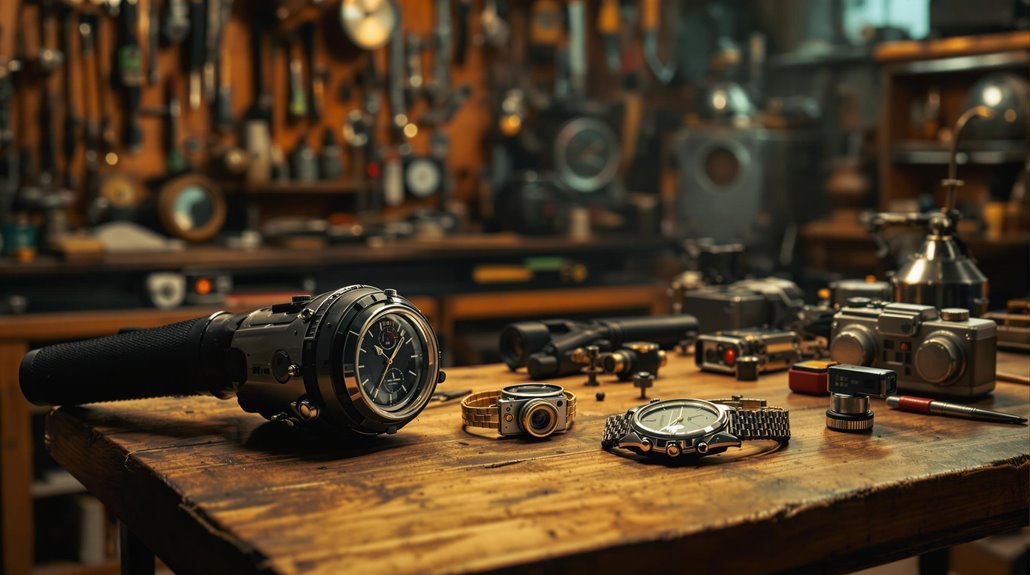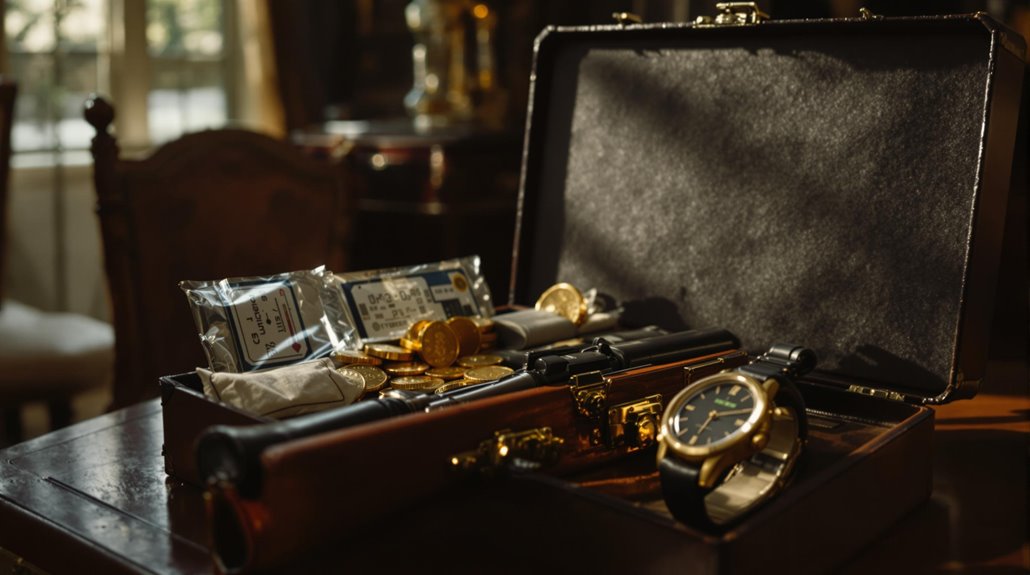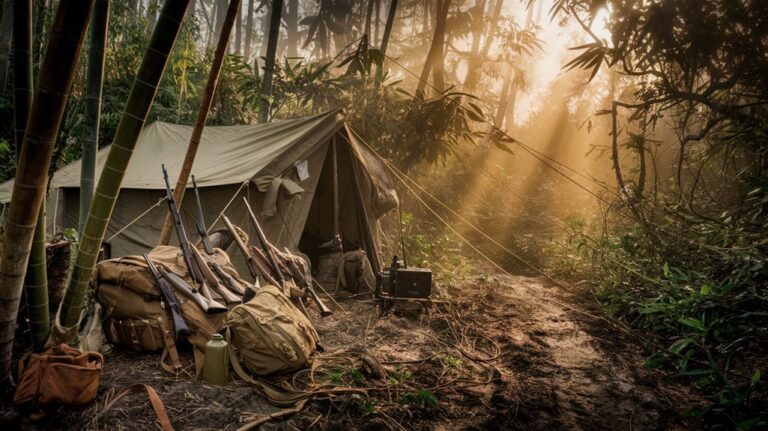The Bond Gadgets That Were Shockingly Real in the Cold War
You've probably watched James Bond movies and thought those ingenious spy gadgets were pure Hollywood fantasy. But during the Cold War, many of Q's seemingly far-fetched inventions had real-world counterparts that were just as deadly and sophisticated. From lipstick guns to poison umbrellas, intelligence agencies on both sides of the Iron Curtain developed tools that would make even 007 do a double-take. The truth behind these covert innovations proves far stranger than fiction.
The KGB's Kiss of Death: Deadly Beauty in Plain Sight
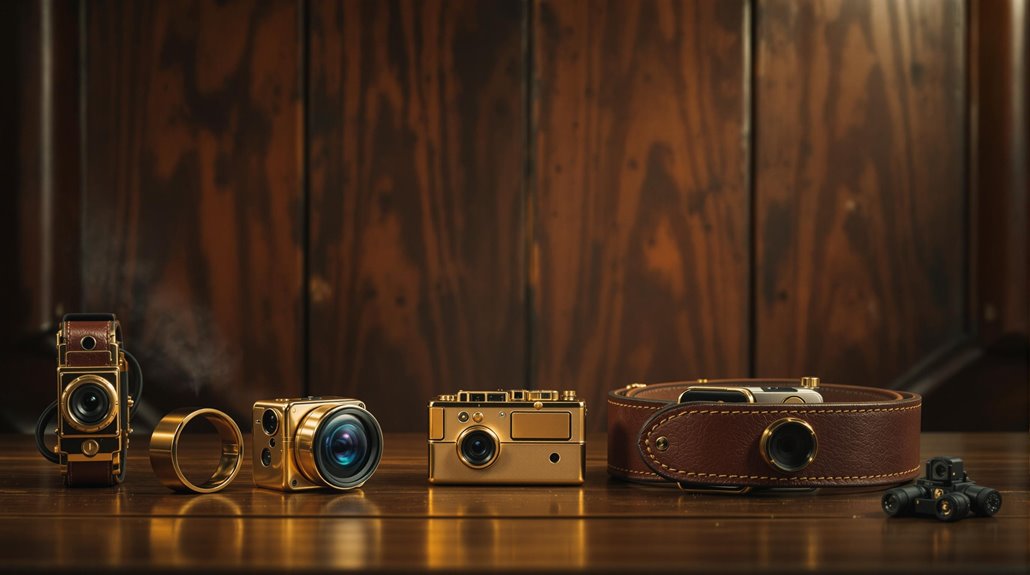
During the tense years of the Cold War, the KGB developed one of its most ingenious and lethal concealed weapons: a 4.5mm single-shot pistol disguised as an ordinary lipstick tube.
This deadly piece of lipstick weaponry, discovered at a West Berlin checkpoint in 1965, exemplified the KGB's commitment to covert operations and deniable assassinations.
You'd never suspect that this innocent-looking cosmetic item could deliver a fatal shot when pressed against a target. The weapon's press-to-fire mechanism made it both simple and deadly to operate.
The weapon's brilliant design allowed female operatives to slip past border security with ease, earning it the chilling nickname "The Kiss of Death."
Along with the lipstick pistol, the KGB created numerous spy gadget disguises, including weapons hidden in torches, pens, and tobacco pipes.
Today, you can find this remarkable artifact at Washington D.C.'s International Spy Museum, where it stands as a symbol of the Cold War's dark legacy of concealed weapons and spy craft.
Hidden in Plain View: The Espionage Camera Revolution
Anyone carrying a pen, wallet, or wristwatch in the 1960s might've unknowingly brushed shoulders with some of the Cold War's most sophisticated spy technology.
In this golden age of covert photography, intelligence agencies transformed everyday items into powerful surveillance tools. The T-100 camera, smaller than a pinhead, could capture 100 crystal-clear images on a tiny film strip, while briefcases and car doors concealed advanced recording equipment. Much like today's skeptics who demand extraordinary evidence, these spy gadgets had to prove their worth through rigorous field testing. One of the most ingenious designs came from CIA Technical Officers who created a modified Seiko watch that looked completely normal while housing sophisticated camera technology.
The espionage evolution reached its peak with devices like the Tropel pen camera, famously used by the "billion dollar spy" Tolkachev to photograph Soviet weapons plans.
These miniature marvels didn't just change intelligence gathering – they revolutionized surveillance technology. The cameras that once helped spies steal secrets eventually influenced the consumer electronics you use today.
Deadly Fashion: When Everyday Items Turn Lethal
While pocket cameras helped spies gather intelligence, other seemingly innocent accessories served a deadlier purpose.
You'd never suspect that your neighbor's umbrella could fire poison darts from 50 feet away, yet that's exactly what the CIA and KGB engineered. These lethal accessories claimed real victims, like Bulgarian dissident Georgi Markov, killed by a ricin-tipped umbrella in 1978.
Fashion espionage reached new heights with mundane items transformed into weapons. The devastating firepower of a typical 30-round magazine made concealing AK-47 parts in everyday items a priority for spies. Even watches weren't immune, with Bond-inspired models featuring deadly garrotte wires like those used by MI6.
The KGB's "kiss of death" lipstick gun, CIA's garrote neckties, and exploding cufflinks from MI6 turned style into deadly substance.
Even writing tools weren't safe – fountain pens concealed syringes, while cigarette cases doubled as firearms.
The most insidious designs included poisoned gloves, hollow coins filled with cyanide, and shoes with secret compartments – proving that Cold War fashion could kill.
Sounds of Secrecy: Audio Surveillance Breakthroughs
Three groundbreaking audio surveillance systems transformed espionage during the Cold War.
You'd find the ingenious Great Seal Bug, a passive device activated by external radio waves, hidden inside a wooden US seal – a Soviet masterpiece of acoustic espionage.
The US Navy countered with SOSUS, a vast underwater network of hydrophones that tracked Soviet submarines through the ocean's natural sound channels.
The device's incredible reliability came from its passive elements design, requiring no internal power source and enabling potentially unlimited operational life.
As surveillance technology evolved, spies developed sophisticated countermeasures.
Like Shelley's monster's haunting sounds in adaptations, these surveillance devices created unsettling sonic landscapes that changed how nations monitored each other.
The Schmidt Kit could detect hidden bugs, while direction-finding equipment pinpointed their exact locations.
Specialized microphones, like the CIA's EASYCHAIR, could pick up conversations through walls using resonant cavity technology.
The game of cat and mouse intensified when the Walker-Whitworth spy ring compromised SOSUS, proving that even the most advanced systems weren't impenetrable.
License to Kill: The Reality of Assassination Devices
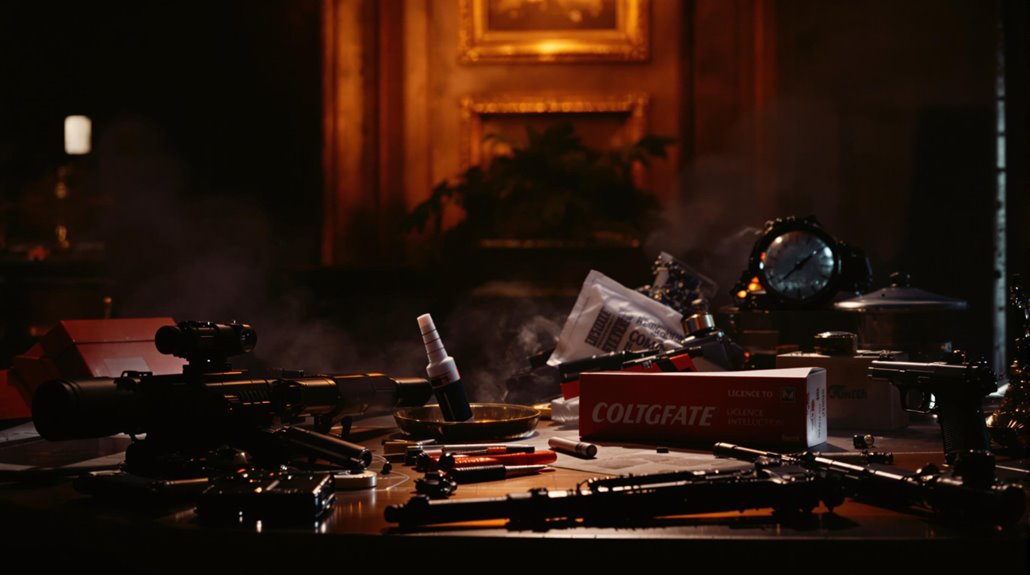
During the Cold War's deadliest years, intelligence agencies developed assassination tools that seemed straight out of a spy thriller.
You'd be shocked to learn that lethal technology like the CIA's heart attack gun could strike from 100 meters away, leaving virtually no trace of the shellfish toxin that caused the victim's death.
The KGB's covert operations arsenal was equally chilling. Hollywood special effects experts helped create five-second masks for CIA operatives to transform their appearance instantly.
 Kiss of Death lipstick, a single-shot weapon disguised as an innocent cosmetic item.
Kiss of Death lipstick, a single-shot weapon disguised as an innocent cosmetic item.
Even umbrellas became weapons, as proven by the infamous 1978 assassination of Georgi Markov using a ricin-filled pellet.
For emergency situations, agents carried hidden cyanide pills in their eyeglass frames, ensuring they'd never face capture and interrogation behind enemy lines.

